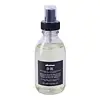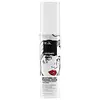What's inside
What's inside
 Key Ingredients
Key Ingredients

 Benefits
Benefits

 Concerns
Concerns

 Ingredients Side-by-side
Ingredients Side-by-side

Water
Skin ConditioningCetearyl Alcohol
EmollientPanthenol
Skin ConditioningParfum
MaskingBehentrimonium Chloride
PreservativeBenzyl Alcohol
PerfumingTocopherol
AntioxidantCetyl Alcohol
EmollientAmodimethicone
Cetrimonium Chloride
AntimicrobialAmodimethicone/Silsesquioxane Copolymer
Sodium Benzoate
MaskingDeceth-5
EmulsifyingCitric Acid
BufferingGlycerin
HumectantCeteth-12
EmulsifyingCyclopentasiloxane
EmollientCitronellol
PerfumingGeraniol
PerfumingPhenoxyethanol
PreservativeHelianthus Annuus Seed Oil
EmollientLinalool
PerfumingAlpha-Isomethyl Ionone
PerfumingWater, Cetearyl Alcohol, Panthenol, Parfum, Behentrimonium Chloride, Benzyl Alcohol, Tocopherol, Cetyl Alcohol, Amodimethicone, Cetrimonium Chloride, Amodimethicone/Silsesquioxane Copolymer, Sodium Benzoate, Deceth-5, Citric Acid, Glycerin, Ceteth-12, Cyclopentasiloxane, Citronellol, Geraniol, Phenoxyethanol, Helianthus Annuus Seed Oil, Linalool, Alpha-Isomethyl Ionone
Cyclopentasiloxane
EmollientC12-15 Alkyl Benzoate
AntimicrobialDimethiconol
EmollientParfum
MaskingCocos Nucifera Oil
MaskingCarthamus Tinctorius Seed Oil
MaskingOpuntia Vulgaris Extract
Skin ConditioningButyl Methoxydibenzoylmethane
UV AbsorberEthylhexyl Methoxycinnamate
UV AbsorberEthylhexyl Salicylate
UV AbsorberBHT
AntioxidantBenzyl Salicylate
PerfumingCitral
PerfumingCoumarin
PerfumingGeraniol
PerfumingLimonene
PerfumingLinalool
Perfuming
 Reviews
Reviews

Ingredients Explained
These ingredients are found in both products.
Ingredients higher up in an ingredient list are typically present in a larger amount.
Cyclopentasiloxane, or D5, is a silicone used to improve texture of products and trap moisture.
D5 is considered lightweight and volatile. Volatile means it evaporates quickly after application. Once evaporated, D5 leaves a thin barrier that helps keep skin hydrated.
It is also an emollient. Emollients help soften the skin and prevent water loss. Silicones create a silky texture in products. D5 helps other ingredients become more spreadable.
Studies show D5 is safe to use in skincare products. We recommend speaking with a skincare professional if you have concerns.
Learn more about CyclopentasiloxaneGeraniol is used to add fragrance/parfum to a product. It is the main component of citronellol. It is a monoterpenoid and an alcohol.
Monoterpenes are naturally found in many parts of different plants.
Geraniol can be found in many essential oils including Rose Oil and Citronella Oil. The scent of Geraniol is often described as "rose-like". Many foods also contain Geraniol for fruit flavoring.
Geraniol can irritate the skin when exposed to air. However, irritation depends on the ability of geraniol to penetrate into the skin. In general, geraniol is not able to penetrate skin easily.
Geraniol is colorless and has low water-solubility. However, it is soluble in common organic solvents.
Like citronellol, it is a natural insect repellent.
2,6-Octadien-1-ol, 3,7-dimethyl-, (2E)-
Learn more about GeraniolLinalool is a fragrance and helps add scent to products. It's derived from common plants such as cinnamon, mint, citrus, and lavender.
Like Limonene, this ingredient oxidizes when exposed to air. Oxidized linalool can cause allergies and skin sensitivity.
This ingredient has a scent that is floral, spicy tropical, and citrus-like.
Learn more about LinaloolParfum is a catch-all term for an ingredient or more that is used to give a scent to products.
Also called "fragrance", this ingredient can be a blend of hundreds of chemicals or plant oils. This means every product with "fragrance" or "parfum" in the ingredients list is a different mixture.
For instance, Habanolide is a proprietary trade name for a specific aroma chemical. When used as a fragrance ingredient in cosmetics, most aroma chemicals fall under the broad labeling category of “FRAGRANCE” or “PARFUM” according to EU and US regulations.
The term 'parfum' or 'fragrance' is not regulated in many countries. In many cases, it is up to the brand to define this term.
For instance, many brands choose to label themselves as "fragrance-free" because they are not using synthetic fragrances. However, their products may still contain ingredients such as essential oils that are considered a fragrance by INCI standards.
One example is Calendula flower extract. Calendula is an essential oil that still imparts a scent or 'fragrance'.
Depending on the blend, the ingredients in the mixture can cause allergies and sensitivities on the skin. Some ingredients that are known EU allergens include linalool and citronellol.
Parfum can also be used to mask or cover an unpleasant scent.
The bottom line is: not all fragrances/parfum/ingredients are created equally. If you are worried about fragrances, we recommend taking a closer look at an ingredient. And of course, we always recommend speaking with a professional.
Learn more about Parfum